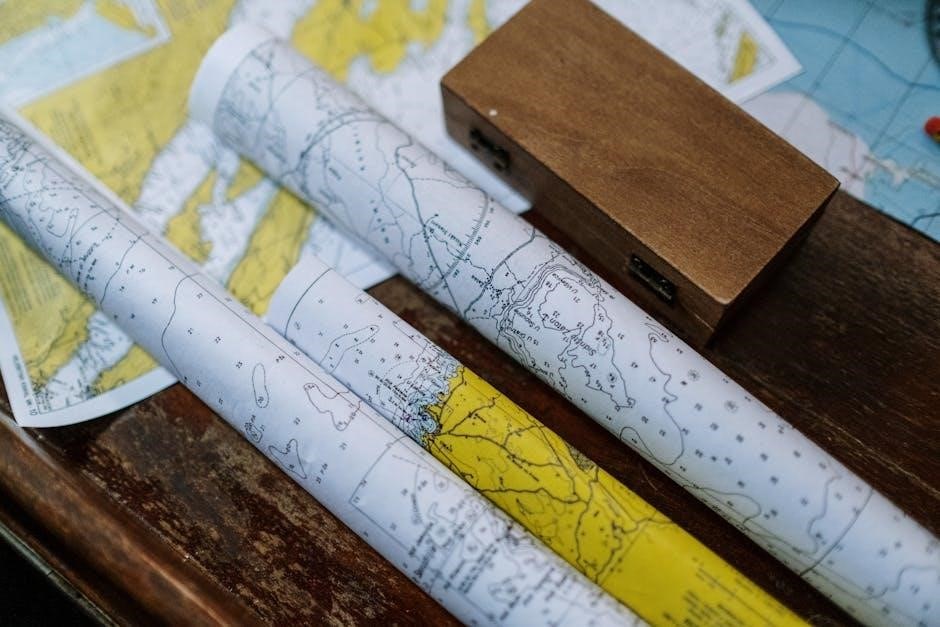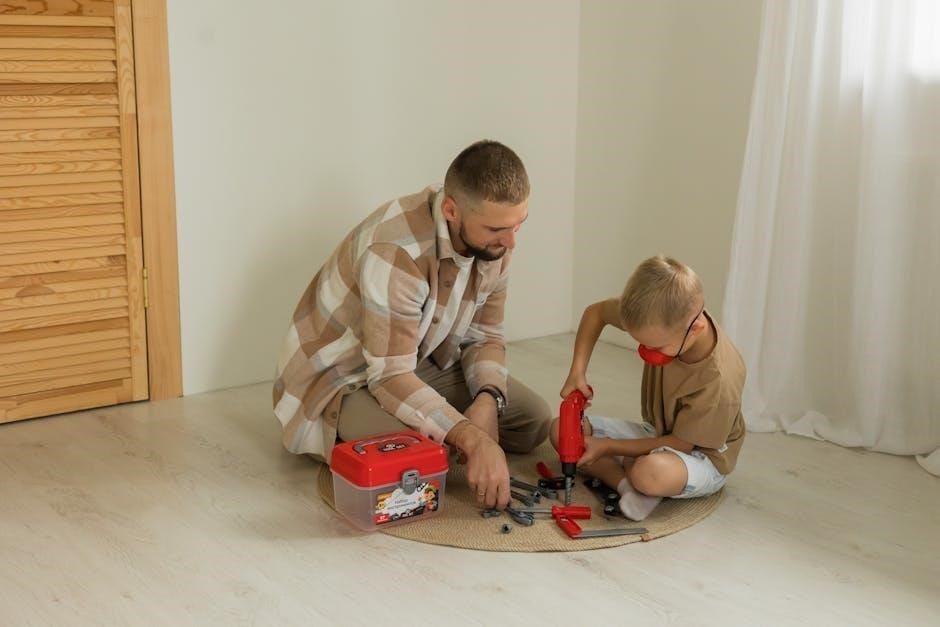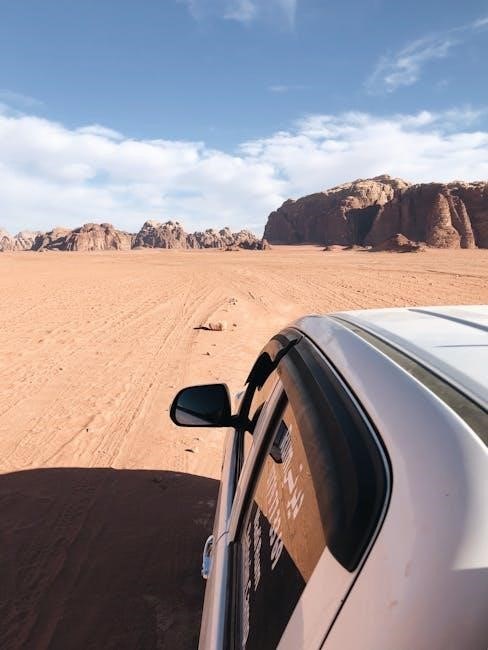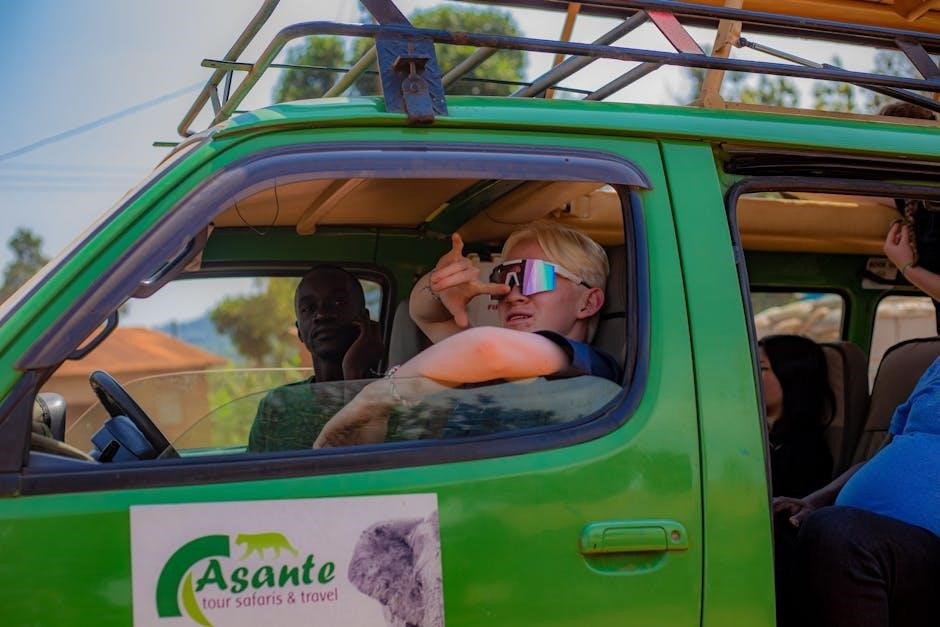Toravon the Ice Watcher is a formidable boss in the Vault of Archavon, requiring strategic coordination and preparation․ This guide provides insights into defeating him effectively, covering roles, mechanics, and optimal strategies for both 10-man and 25-man raids․
Overview of Toravon the Ice Watcher
Toravon the Ice Watcher is a challenging ice giant boss located in the Vault of Archavon, a raid instance within Wintergrasp Fortress․ He is only accessible if your faction controls Wintergrasp, making it a contested raid․ The fight involves managing Frostbite stacks on tanks and dealing with Whiteout, a debuff that increases frost damage taken․ Frozen Orbs must be prioritized to avoid overwhelming the raid․ While there’s no strict DPS check, coordination and proper role execution are crucial․ This encounter tests teamwork, especially in handling the boss’s mechanics and maintaining raid survival․
Importance of the Guide

This guide is essential for players aiming to defeat Toravon the Ice Watcher, offering clear strategies and insights for both 10-man and 25-man raids; It provides detailed breakdowns of boss mechanics, such as Frostbite and Whiteout, ensuring all roles understand their responsibilities․ Whether you’re a seasoned raider or new to high-level content, this guide helps optimize performance and avoid common pitfalls․ By focusing on preparation, execution, and teamwork, it equips your raid with the tools to succeed against this challenging encounter and claim the rewards within the Vault of Archavon․
Structure of the Article
This guide is organized to provide a comprehensive understanding of Toravon the Ice Watcher, from background information to advanced tactics․ It begins with an introduction to the boss and the importance of this guide, followed by a detailed structure outlining the content․ The guide then delves into Toravon’s background, raid instance details, and preparation requirements․ It covers essential strategies for tanks, healers, and DPS, as well as advanced tactics for optimizing performance․ Finally, it discusses loot rewards and concludes with final tips for success․ Each section is designed to ensure players are well-prepared and informed for this challenging encounter in the Vault of Archavon․
Background Information

Toravon the Ice Watcher is a powerful Ice giant boss located in the eastern wing of the Vault of Archavon, a pivotal location in Northrend․
Who is Toravon the Ice Watcher?
Toravon the Ice Watcher is a formidable boss in World of Warcraft: Wrath of the Lich King, known for his icy prowess and relentless attacks․ As a powerful ice giant, he serves as a gatekeeper for the Lich King, guarding the frozen halls of Northrend․ His abilities, such as Frostbite and Whiteout, make him a challenging opponent․ Toravon is not only a test of skill but also a key figure in the game’s narrative, embodying the harsh, unforgiving environment of the frozen wasteland․ His role as a boss underscores his importance in the game’s raid content․
Location and Accessibility
Toravon the Ice Watcher is located in the Vault of Archavon, a raid instance within the Wintergrasp Fortress in Northrend․ To access the instance, players must be part of a raid group and navigate through the fortress, which is a contested zone․ The entrance is located in the Archavon’s Throne Room, and the instance is only available during specific times when the fortress is under raid conditions․ Players can reach Wintergrasp via a portal in Dalaran or by traveling directly to the zone․ Toravon is not the first boss of the instance, requiring progress through earlier encounters to reach him․
Historical Context in the Game
Toravon the Ice Watcher holds significant historical importance in World of Warcraft, primarily as a key figure tied to the Lich King’s power during the Wrath of the Lich King expansion․ As a formidable elemental guardian, Toravon is deeply connected to the icy forces that dominate Northrend․ His role within the Vault of Archavon underscores his position as a protector of ancient and powerful artifacts linked to the Lich King’s reign․ Toravon’s presence reflects the broader conflict between the Lich King’s forces and the factions of Azeroth, making him a symbolic and strategic target for players seeking to undermine the Lich King’s defenses․

Raid Instance Details
Toravon the Ice Watcher is a challenging raid boss within the Vault of Archavon, a key instance in Wrath of the Lich King, located in Wintergrasp․
Vault of Archavon Overview
The Vault of Archavon is a prominent raid instance in World of Warcraft: Wrath of the Lich King, situated in the contested zone of Wintergrasp․ This instance is central to the expansion’s narrative, featuring encounters with powerful bosses tied to the Lich King’s forces․ Designed for both 10-man and 25-man raids, it offers challenging content for players at the level cap of 80․ The Vault is notable for its high-level loot, including tier set pieces, making it a crucial destination for raiders seeking progression․ Its accessibility and strategic importance in Wintergrasp add to its significance in the game’s raid landscape․
Wintergrasp Fortress Connection
The Wintergrasp Fortress plays a pivotal role in accessing Toravon the Ice Watcher, as it serves as the gateway to the Vault of Archavon․ Located in the contested zone of Wintergrasp, the fortress is a key battleground for faction control․ Players must secure the fortress to gain access to the raid instance, adding a layer of strategic importance․ The fortress’s icy environment reflects Toravon’s mastery over frost, tying the location thematically to the encounter․ Controlling Wintergrasp not only grants access but also provides a strategic advantage, making it a critical point of interest for raiders preparing to face Toravon․
Faction Control Requirements
To access Toravon the Ice Watcher, players must meet specific faction control requirements․ The raid instance, Vault of Archavon, is only available when a player’s faction controls Wintergrasp Fortress․ This adds a layer of strategic importance, as the fortress is a contested zone․ Victory in Wintergrasp’s periodic battles determines access, with the winning faction gaining entry to the vault․ Coordination with fellow players is crucial to secure control, ensuring the opportunity to challenge Toravon․ This mechanic ties the raid to the broader game world, emphasizing the significance of faction dominance in shaping content accessibility․
Preparation for the Raid
Ensure your team is well-coordinated, understands the fight mechanics, and has studied strategies․ A well-prepared group significantly increases chances of success against Toravon․
Gear Requirements
For Toravon, players should aim for gear with a minimum item level of 232, as this ensures survivability and effectiveness․ DPS classes should prioritize hit rating (8% for melee, 17% for casters) and expertise (26 for melee) to maximize their damage output․ Tanks need high stamina and armor, while healers should focus on spell power and mana regeneration․ Enchants and gems should enhance these stats further․ Frost resistance gear is beneficial but not mandatory․ Weapons should be enchanted with powerful enchants like Massacre or Blood Draining․ Properly optimized gear significantly improves the team’s chances of success․

Class Roles and Responsibilities
In the Toravon encounter, each class must fulfill its role effectively․ Tanks are responsible for managing aggro and coordinating swaps to handle Frostbite stacks․ Healers must prioritize dispelling Whiteout debuffs and maintaining consistent healing through high-damage phases․ DPS players should focus on maximizing damage while avoiding unnecessary damage from Frozen Orbs․ Class-specific cooldowns should be used strategically to support the team․ Communication and coordination between roles are crucial to ensure smooth progression and minimize risks during the fight․
Essential Addons and Tools
Success against Toravon requires the right addons and tools․ Deadly Boss Mods or BigWigs provide critical alerts for boss mechanics like Frostbite and Whiteout․ Healers benefit from HealBot or Grid to manage dispels and track debuffs․ DPS players should use Recount or Skada to monitor performance․ Voice communication tools like Discord or Vent are vital for coordination․ Additionally, RaidSlack or CT RA help manage complex strategies․ Ensure all addons are up-to-date for optimal performance in this challenging encounter․
Strategy Overview
Mastering Toravon requires understanding his mechanics, assigning roles clearly, and coordinating cooldowns effectively․ Practice the encounter to refine your approach and review logs for improvement․
10-Man vs․ 25-Man Raid Differences
In a 10-man raid, coordination is more intimate, with fewer players handling mechanics like Frozen Orbs and Frostbite․ Healing and DPS roles are more critical due to reduced numbers․ In contrast, 25-man raids offer more flexibility, with additional healers and DPS to absorb mistakes․ Tank coordination remains similar, but 25-man raids allow for more forgiving strategies․ The key difference lies in resource management and player responsibility․ Both modes require precise execution, but 25-man raids are generally less punishing due to higher overall damage output and healing capacity․ Adjust strategies based on group size to optimize success․
Key Mechanics to Understand
Mastering Toravon’s mechanics is crucial for success․ The encounter revolves around managing Frostbite, a stacking debuff that increases Frost damage taken, and Whiteout, a raid-wide debuff that slows casting and attacks․ Players must also handle Frozen Orbs, which detonate if not destroyed, causing massive damage․ Movement is key, as periodic Frost Pulses deal damage and push players back․ Healers must anticipate and mitigate these effects, while DPS should focus on orb destruction․ Proper positioning and communication are vital to avoid unnecessary damage and ensure smooth progression through the fight․
Common Mistakes to Avoid
Avoiding common mistakes is essential for a successful Toravon encounter․ Many raids fail due to poor positioning, leading to unnecessary damage from Frost Pulses․ Players often forget to manage Frostbite stacks, causing premature deaths․ Healers frequently mismanage Whiteout, failing to prioritize cooldowns․ DPS sometimes neglect to destroy Frozen Orbs, resulting in raid-wide detonations․ Tank miscommunication during swaps can lead to catastrophic damage spikes․ Ensure all roles understand their responsibilities and maintain constant communication to avoid these pitfalls and progress smoothly through the fight․
Tank Roles and Responsibilities
Tanks must lead the raid, control Toravon’s movements, and manage aggro, ensuring optimal positioning and damage mitigation․ They guide the team through the encounter, making critical decisions to prevent unnecessary damage and maintain raid cohesion․
Managing Frostbite Stacks
Tanks must carefully manage Frostbite stacks, as excessive stacks drastically increase damage taken․ Regular taunting and tank swapping are essential to distribute stacks evenly․ Communicate with your co-tank to ensure smooth transitions and prevent stack accumulation․ Healers should be vigilant in supporting tanks with high stacks․ Avoid unnecessary abilities that could generate additional threat․ Cooldowns should be used strategically to mitigate damage during high-stack phases․ Proper management ensures raid stability and prevents avoidable wipes․ Coordination and awareness are key to handling this mechanic effectively throughout the encounter․
Taunting and Tank Swapping
Taunting and tank swapping are critical in Toravon’s encounter to manage Frostbite stacks․ Tanks should alternate aggro using taunt abilities to prevent excessive stacks on one player․ Communicate with your co-tank to execute smooth swaps, ensuring the boss transitions seamlessly․ Use abilities like Taunt or Challenging Shout to initiate swaps, typically after 3-4 Frostbite stacks․ Proper timing prevents stacks from escalating and reduces damage taken․ Healers must adapt to the active tank, while DPS should avoid actions that might interfere with threat transfer․ Efficient tank swapping ensures balanced Frostbite distribution and maintains raid stability throughout the fight․
Building and Maintaining Threat
Building and maintaining threat is essential for tanks in the Toravon encounter to ensure the boss focuses on them․ Use high-threat abilities like Shield Slam or Holy Wrath to establish aggro early․ Rotate abilities consistently to maintain a strong threat lead․ Communicate with your co-tank to avoid overlapping threat generation․ Use cooldowns strategically to maximize threat during critical phases․ Proper threat management ensures smooth tank swaps and prevents unnecessary damage to the raid․ Keep your rotation tight and prioritize threat-generating abilities to maintain control of Toravon throughout the fight․

Healer Roles and Responsibilities
Healers must prioritize raid member health, dispel debuffs, and manage mana efficiently․ Constant awareness of Whiteout and Frostbite effects is crucial for timely healing interventions․
Managing Whiteout Debuff
Healers must vigilantly monitor and dispel the Whiteout debuff, which increases damage taken and reduces healing received․ This debuff stacks, making prompt action essential to prevent raid-wide issues; Priests can use Dispel Magic, while paladins utilize Cleanse to remove the effect․ Healers should prioritize dispelling Whiteout from tanks and themselves first, as it drastically impacts their ability to sustain the group․ Coordinating cooldowns during Whiteout peaks ensures stability․ Communication and quick reflexes are critical to managing this mechanic effectively and maintaining raid viability throughout the encounter․
Cooldown Management
Effective cooldown management is vital for healers in the Toravon encounter, particularly when dealing with the Whiteout debuff and Frostbite stacks․ Priests, Paladins, Shamans, and Druids each have unique cooldowns that, when timed strategically, can mitigate heavy damage phases․ Coordinating with fellow healers ensures comprehensive coverage, preventing healer deaths and maintaining raid stability․ Communication is key to synchronize cooldowns, allowing the team to withstand Toravon’s punishing mechanics․ A well-executed cooldown rotation can turn potentially disastrous moments into manageable challenges, ensuring the raid’s success against this formidable boss․
DPS Roles and Responsibilities
DPS players must manage Frozen Orbs, maximize damage output without excessive risk, and avoid unnecessary damage to themselves and the raid․ Coordination is key to success․
Dealing with Frozen Orbs
DPS players must quickly pick up Frozen Orbs to prevent stacking on the raid․ Use abilities to prevent orb detonation, as this increases damage taken․ Designate orb carriers and ensure proper placement away from the group․ Avoid clustering, as overlapping orb effects amplify damage․ Communicate orb status to avoid overloading a single target․ orb management is critical to maintaining raid stability and minimizing unnecessary damage․ Mismanagement can lead to wipes, so coordination and awareness are essential․ Assign roles to ensure smooth orb handling throughout the encounter․
Maximizing Damage Output
To maximize damage output against Toravon, DPS players must focus on optimizing their rotations and cooldowns․ Prioritize high-damage abilities during phases when Frostbite stacks are low․ Avoid unnecessary target switching, as it reduces overall DPS efficiency․ Make use of debuffs and raid buffs to amplify damage output․ Ensure proper positioning to maintain consistent attacks without interruptions․ Coordinate with the group to synchronize burst damage during vulnerable phases․ Avoid pulling aggro from the tank to prevent unnecessary threat resets․ By maintaining focus and minimizing downtime, DPS can significantly contribute to defeating Toravon efficiently․

Avoiding Unnecessary Damage
Avoiding unnecessary damage is crucial for a successful encounter with Toravon․ Stay vigilant and avoid standing in harmful effects like Frostbite stacks, which increase damage taken over time․ Be cautious of Frozen Orbs, as touching them triggers area-wide damage․ Maintain proper positioning to dodge Ice Shards and avoid clustering, which can lead to AoE damage; Communicate with your team to coordinate movements and reduce avoidable damage․ Use defensive cooldowns wisely to mitigate incoming attacks․ Minimizing unnecessary damage ensures healer mana efficiency and improves overall raid survivability, making the fight more manageable for the entire group․
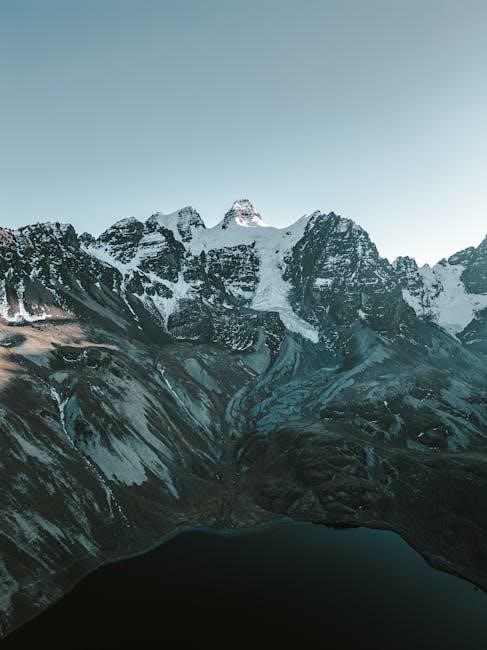
Fight Mechanics
Toravon’s battle demands precise movement and awareness․ The fight involves managing debuffs, avoiding environmental hazards, and coordinating team actions to prevent unnecessary complications․ Stay alert and adapt strategies to overcome his icy onslaught effectively․
Frostbite and Its Impact
Frostbite is a critical mechanic in the Toravon encounter, applying a stacking debuff to players․ Each stack increases Frostbite’s effect, slowing movement and casting speeds․ Tanks must manage stacks carefully, as excessive accumulation can lead to wipes․ Healers should prioritize dispelling Frostbite or using cooldowns to mitigate its impact․ DPS players must avoid unnecessary aggro to prevent stacking․ Proper coordination and communication are essential to manage Frostbite effectively, ensuring the raid’s survival and maintaining a steady pace in the fight․
Whiteout and Its Consequences
Whiteout is a devastating mechanic triggered when Toravon’s health reaches 35%, significantly increasing the raid’s damage taken․ This phase demands precise coordination, as the healing requirement spikes dramatically․ Healers must prioritize managing the Whiteout debuff, which stacks and amplifies damage over time․ Failure to dispel or mitigate this effect can lead to wipes․ Healers should rotate cooldowns and focus on high-priority targets to sustain the raid through this intense phase․ Proper preparation and communication are vital to navigate Whiteout successfully, ensuring the raid’s survival and progression toward defeating Toravon․
Frozen Orb Management
Frozen Orbs are a critical mechanic in the Toravon encounter, spawning periodically throughout the fight․ DPS players must prioritize destroying these orbs quickly to prevent them from detonating and dealing massive raid-wide damage․ The orbs are vulnerable to high-damage attacks, making them a focal point for coordinated burst damage․ Failure to manage the orbs effectively can lead to wipes, as their explosions exacerbate the already intense damage during Whiteout․ Successful orb destruction grants a temporary Frostbite Resistant buff, reducing Frostbite damage taken․ Efficient orb management is essential for a smooth and successful encounter․

Advanced Tactics
Advanced tactics involve refining strategies to optimize DPS rotations, enhance healer coordination, and master tank swapping to overcome Toravon’s challenging mechanics efficiently․
Optimizing DPS Rotation
Optimizing DPS rotation is crucial for maximizing damage output against Toravon․ Players should focus on maintaining consistent cooldown usage, particularly during Whiteout phases, to capitalize on increased damage windows․ Managing Frostbite stacks effectively ensures sustained DPS without compromising survivability․ Additionally, prioritizing abilities that synergize with Frozen Orb effects can significantly boost overall damage․ Proper timing of burst damage rotations during Whiteout and leveraging debuff windows are key to maintaining high DPS․ Finally, ensuring seamless transitions between DPS phases and defensive requirements is essential for optimal performance․ Practice and familiarity with rotations will refine execution and enhance overall raid success․ Always adapt based on raid composition and mechanics․ Avoid unnecessary ability overlaps to maintain efficiency․ Cooldown synchronization with the team can further amplify damage output, making it a vital aspect of advanced DPS strategies․ Balancing personal damage with raid utility ensures a well-rounded contribution․ Regularly reviewing damage meters and adjusting rotations can help identify and improve weak points in the DPS chain․ Communication with healers and tanks is also vital to coordinate burst phases effectively, ensuring maximum damage output without compromising raid stability․ By mastering these techniques, DPS players can significantly enhance their effectiveness in the encounter․ This focus on precision and adaptation is what separates good players from exceptional ones in challenging content like Toravon the Ice Watcher․ Always aim to refine and perfect rotations to achieve optimal results․ Remember, optimal DPS rotation is about balance, timing, and coordination with the team․ This ensures maximum damage while maintaining the ability to adapt to changing fight dynamics․ By focusing on these elements, players can elevate their performance and contribute meaningfully to the raid’s success․
Healer Coordination
Healer coordination is vital for success in the Toravon encounter, as the consistent damage and Whiteout debuff require precise healing management․ Assign one healer to focus on dispelling Frostbite stacks from the main tank, while others prioritize raid-wide healing․ Communication is key to synchronize cooldowns, such as Divine Shield or Tranquility, during intense damage phases․ Healers should also monitor the Whiteout debuff timer to prepare for increased healing demands․ Assigning roles ensures no overlap in responsibilities, maximizing efficiency․ Preemptive healing during Frozen Orb phases can mitigate unnecessary damage․ Coordination with tanks and DPS ensures a balanced approach to managing mechanics and maintaining raid stability․ Proper healer synergy is crucial for overcoming the encounter’s challenges․
Tank Swapping Techniques
Tank swapping is essential in the Toravon encounter to manage the increasing Frostbite stacks on the main tank․ Tanks should swap when the active tank reaches 5-7 Frostbite stacks to prevent excessive damage․ Use taunts to smoothly transition aggro, ensuring the boss doesn’t attack the wrong target․ The incoming tank should immediately start generating threat while the outgoing tank uses cooldowns to reduce damage․ Communicate swaps clearly to avoid overlap and maintain a steady rotation; Proper timing and coordination prevent healer strain and ensure the raid’s stability․ Effective swaps are crucial for managing Toravon’s relentless Frostbite mechanic․ Precise execution ensures a smooth encounter․
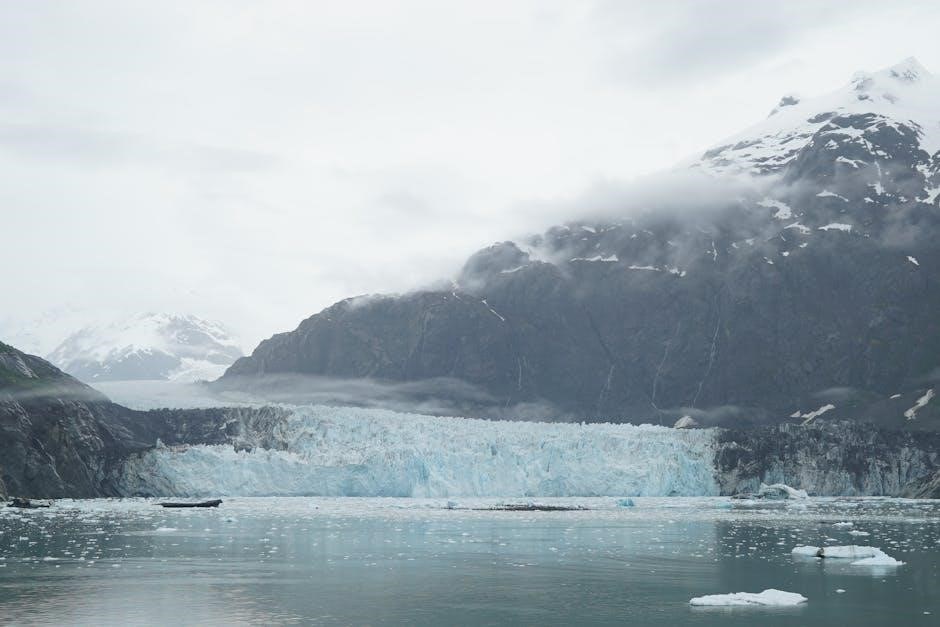
Loot and Rewards
Defeating Toravon rewards players with powerful loot, including Icecrown Citadel tier pieces, frost-themed weapons, and Emblems of Triumph for upgrading gear․
Items Dropping from Toravon
Toravon the Ice Watcher drops highly sought-after loot, including the Staff of Enduring Winter, Ring of the Fiery Depths, and Pendant of the Iceborn Vanquisher․ These items are tailored for various classes, offering frost-themed enhancements like increased frost damage, stamina, and spell power․ Additionally, the boss may drop Frozen Orb of Summoning, a unique trinket that enhances summoning abilities․ The loot is tailored for both casters and melee classes, ensuring diverse utility․ Drop rates are consistent, making Toravon a prime target for players seeking powerful gear․
Set Pieces and Upgrades
Toravon the Ice Watcher drops select pieces from the Icecrown Citadel (ICC) tier sets, which are highly desirable for various classes․ These include chest, shoulder, and glove pieces tailored for both casters and melee classes․ Each set piece enhances abilities like frost resistance, spell power, or attack power, depending on the class․ Upgrading these items through the ICC crafting system or emblem exchanges can further boost their stats, making them crucial for progression in high-level content; Collecting multiple pieces from the same set unlocks powerful set bonuses, optimizing performance in raids and dungeons․
Emblem of Triumph Drops
Toravon the Ice Watcher drops two Emblem of Triumph per week on both 10-man and 25-man difficulties․ These emblems are a valuable currency used to purchase high-level gear from vendors in Dalaran and Icecrown Citadel․ Players can exchange them for tier pieces, trinkets, weapons, and other powerful items․ Additionally, Emblems of Triumph can be traded for Champion’s Seals, offering flexibility in gear progression․ This makes Toravon a key target for players seeking to upgrade their equipment and enhance their character’s performance in endgame content․
Defeating Toravon the Ice Watcher requires skill, strategy, and teamwork; This guide provides a comprehensive path to success․ Preparation and execution are key to overcoming his challenges․ Good luck, and may your future raids be victorious!
Final Tips for Success
To triumph over Toravon, emphasize clear communication and role coordination․ Assign responsibilities beforehand to avoid confusion․ Practice the fight in lower difficulties to master mechanics․ Healers must anticipate Whiteout debuffs, while tanks should manage Frostbite stacks meticulously․ DPS players should focus on avoiding Frozen Orbs and maximizing damage during active phases․ Use cooldowns strategically and stay vigilant during Whiteout․ Maintain calm and adapt quickly to unexpected challenges․ With teamwork, preparation, and focus, your raid will conquer Toravon and claim victory․ Remember, coordination and execution are key to success in this challenging encounter․
Post-Raid Analysis
After defeating Toravon, conduct a thorough review of the encounter․ Analyze raid logs to identify areas for improvement, such as avoidable damage taken or missed cooldowns․ Highlight key moments where mistakes occurred and discuss corrective strategies․ Celebrate successes but also address failures constructively․ Assign improvement tasks based on individual performance metrics․ Use this opportunity to refine tactics for future attempts and ensure the team learns from the experience․ Open discussion among raid members fosters better coordination and understanding․ A detailed post-raid analysis ensures continuous growth and prepares the team for even greater challenges ahead․
Future Preparation for Higher Content
After conquering Toravon, focus on optimizing your gear through crafting, dungeon drops, or vendor purchases․ Enhance your class knowledge and refine your rotation for maximum efficiency․ Apply the strategies learned from Toravon to future encounters, such as managing debuffs and cooldowns․ Analyze your raid performance, identify weaknesses, and improve team coordination․ Research upcoming content mechanics and challenges to stay ahead․ Continuously adapt and refine your approach to tackle harder content effectively․ Preparation and adaptability are key to progressing through higher-level content seamlessly․






















